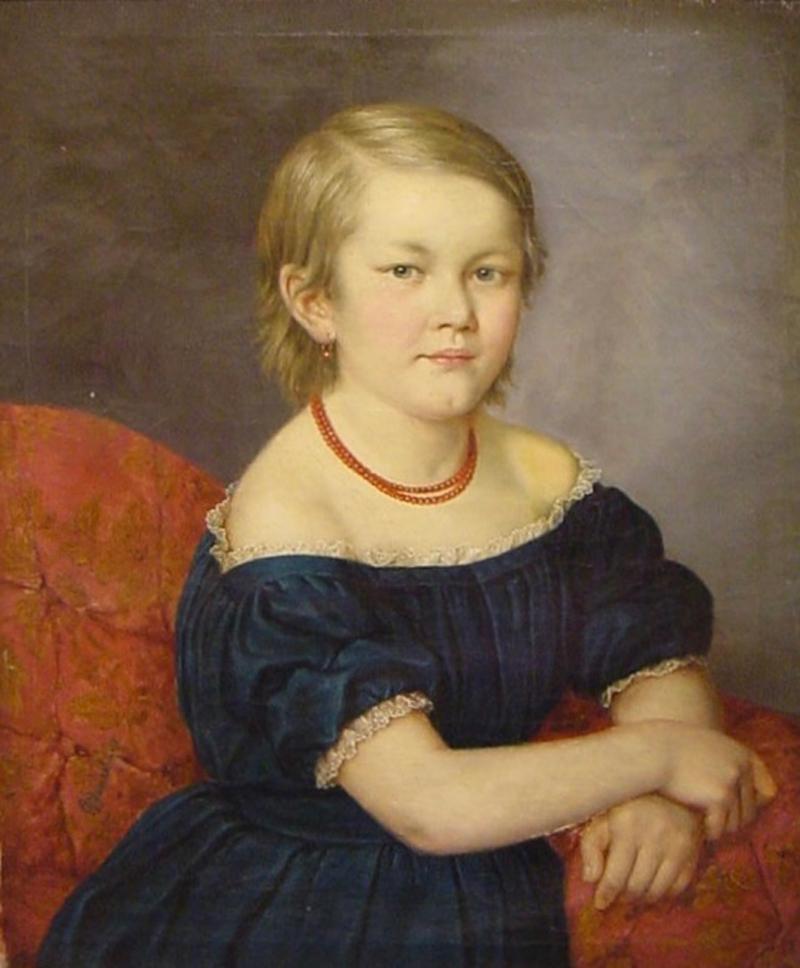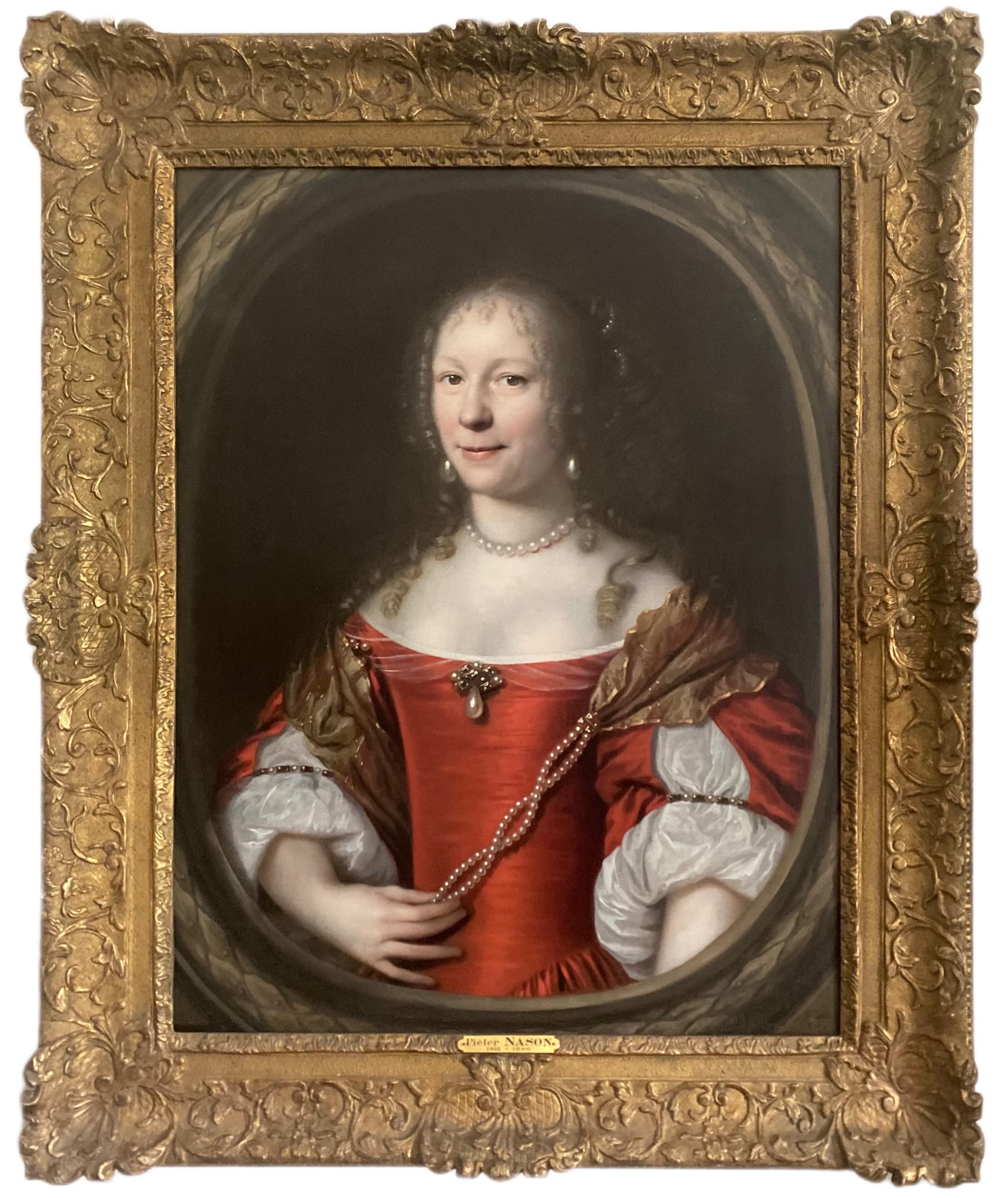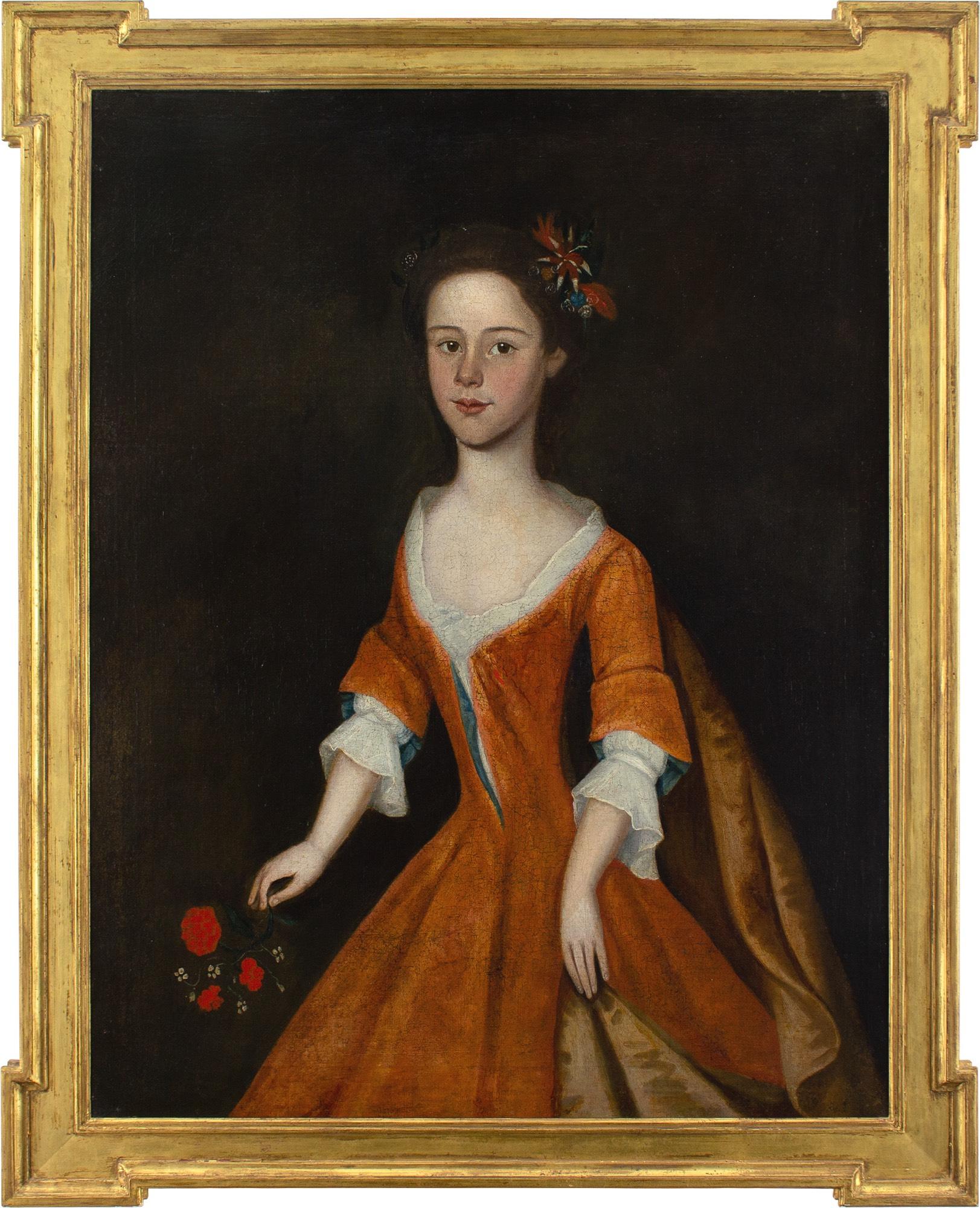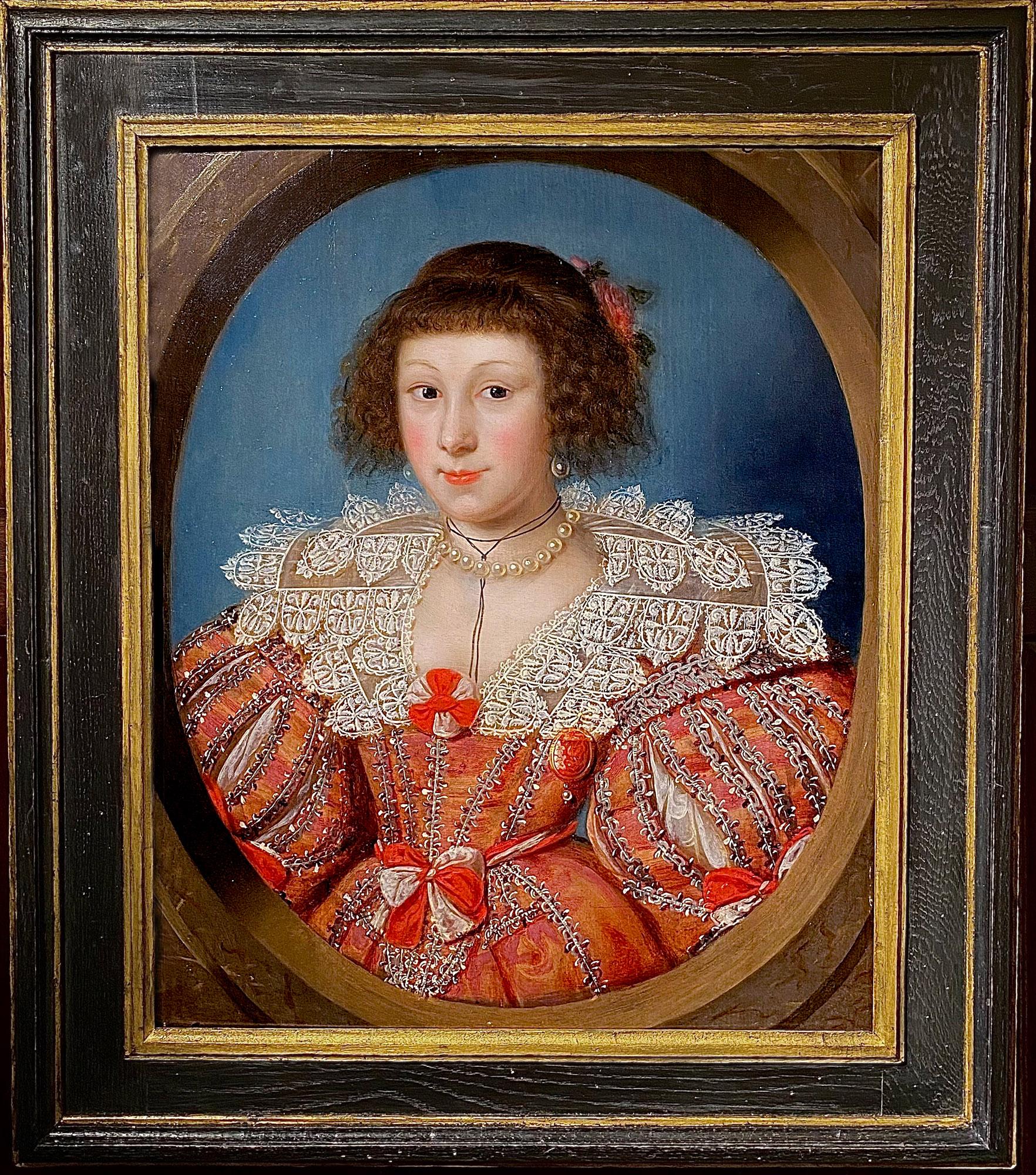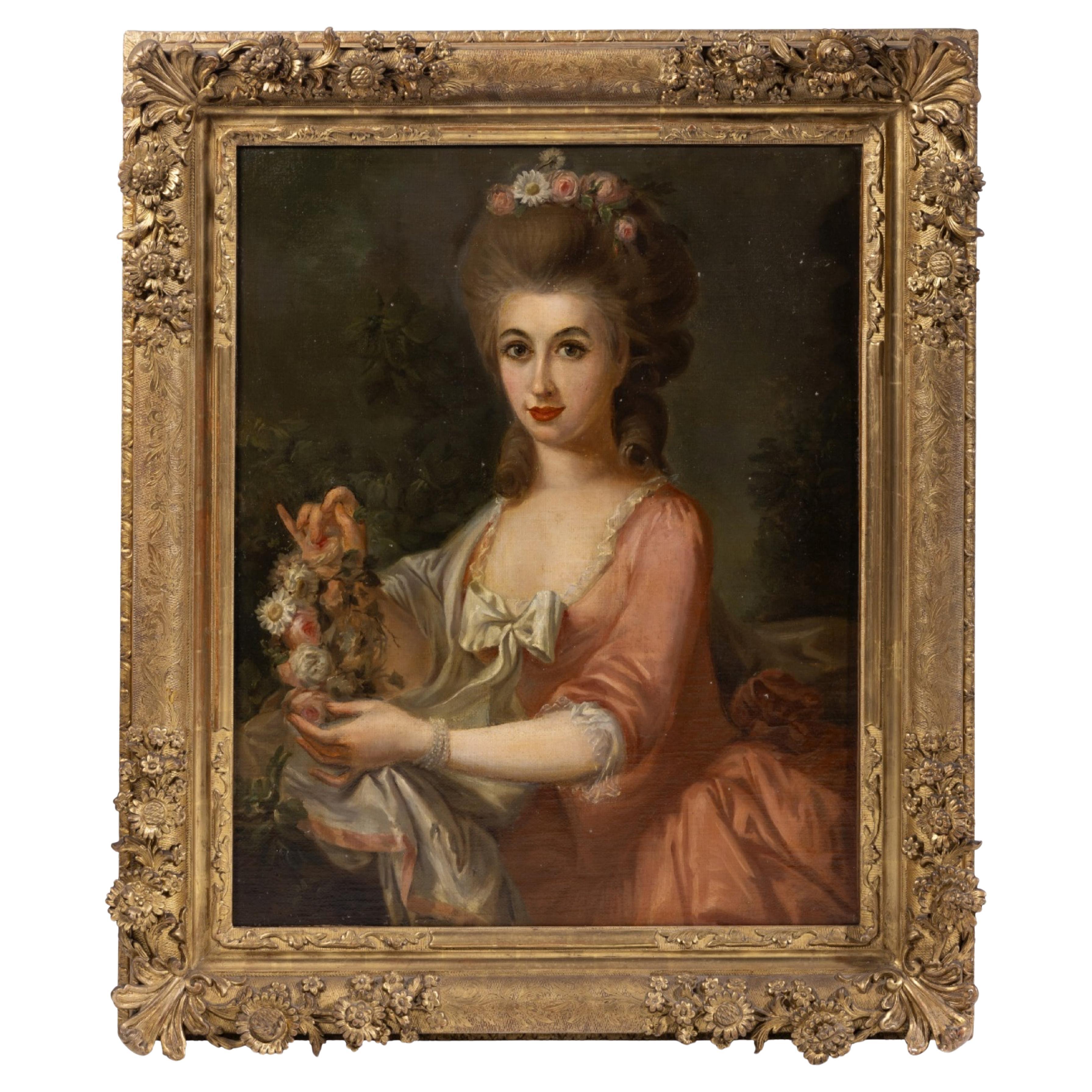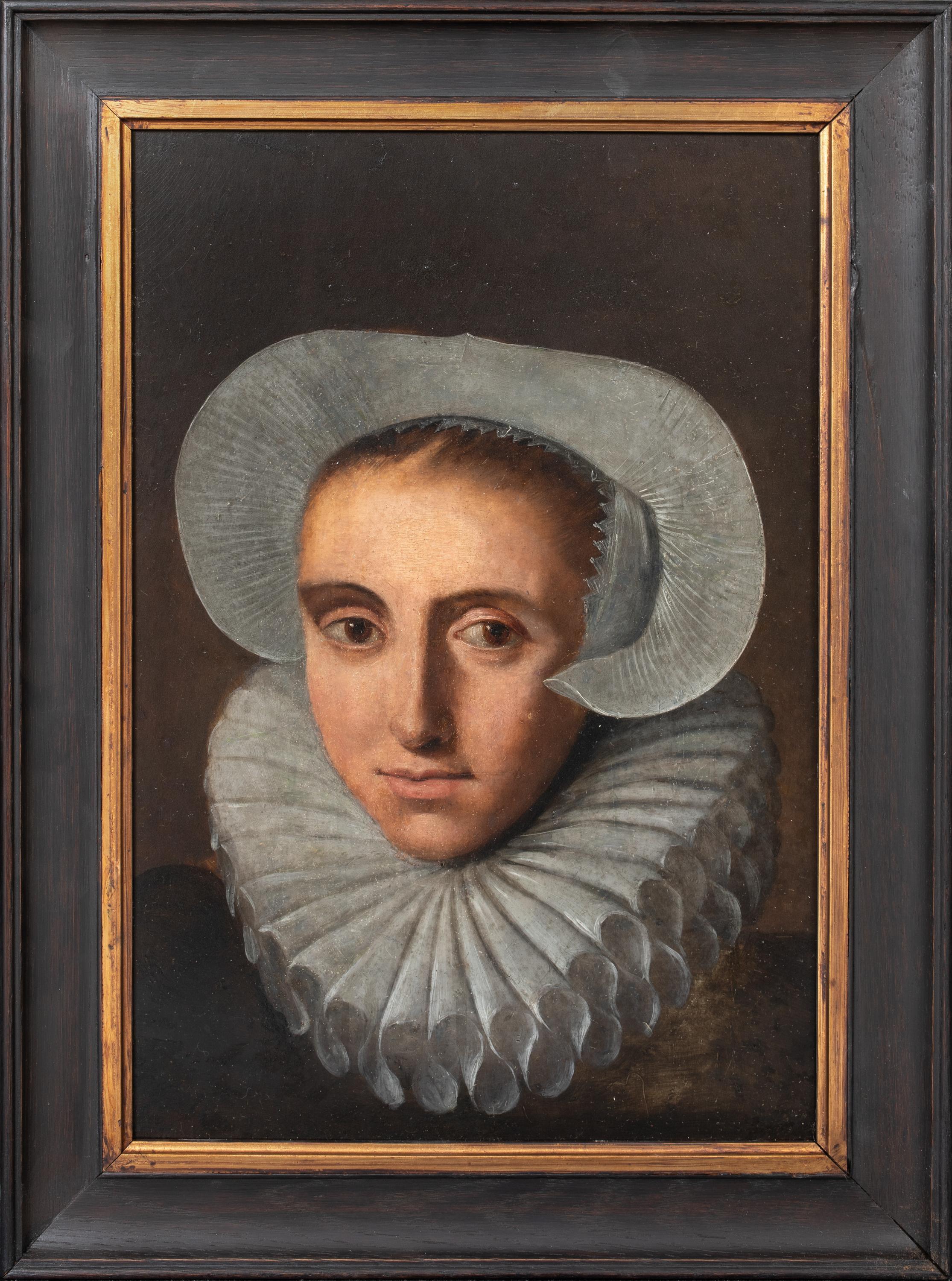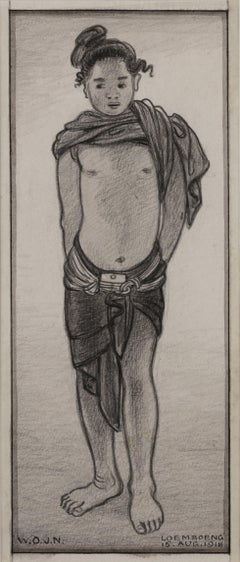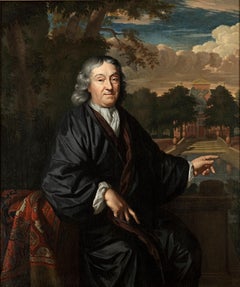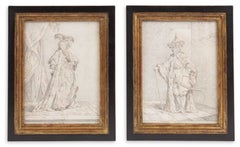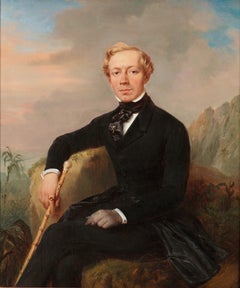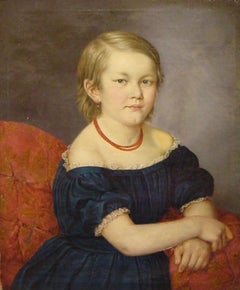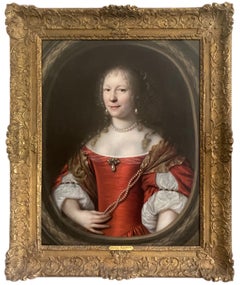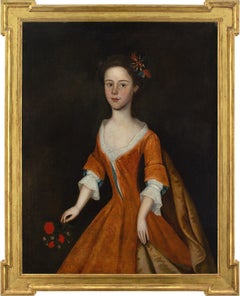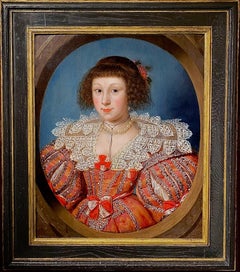Items Similar to Portrait of a girl with a rose and a red coral necklace (c. 1631)
Want more images or videos?
Request additional images or videos from the seller
1 of 8
David FinsoniusPortrait of a girl with a rose and a red coral necklace (c. 1631)1631
1631
$101,033.29
£75,238.28
€85,000
CA$139,490.10
A$154,645.39
CHF 81,272.19
MX$1,892,606
NOK 1,015,007
SEK 952,685.63
DKK 647,161.66
About the Item
David Finsonius (Veere 1597- Bergen op Zoom 1646/1648)
Portrait of a girl with a rose and a red coral necklace
With traces of the artist’s signature and annotated AETATIS S.V. 2 1⁄2 Ao 1631
Oil on panel, H. 104.5 x 79.5 cm
Provenance:
Purchased by Jonkheer Helenus Marius Speelman (1857-1909), Kasteel de Wittenburg; thence by
descent
The work shows a strong resemblance to a portrait by Finsonius in the North Brabant Museum. This
signed and dated "Girl with Basket and Cherries" (Inv. 15529), was painted just a year later, in 1632.
Not only are the paintings remarkably similar in overall size and format, in painting style, and in the
positioning of the girls in full length in their white lace dresses. They are also connected by the
iconographic scheme of the respective coral necklaces, each with a gold memorial medal hanging
from it. Although they are of course individuals, the faces are very similar in their depictions of
features such as eyes, nose, and lips. This points to the same technique applied by the same painter.
Finally, the handwriting is almost the same on the works by Finsonius known so far.
About the painter, David Finson named 'Finsonius' (related to the better-known Louis Finson), very
little is known unknown because he has not yet been well researched. He was a history and portrait
painter, permanently established in Bergen op Zoom before 1637 and apparently mainly active there.
Since the girl from the North Brabant Museum was almost certainly painted in Bergen op Zoom in
1632, it is quite likely that your painting was also painted there. Possibly our portrait is her older
sister.
- Creator:David Finsonius (1597 - 1646, Dutch)
- Creation Year:1631
- Dimensions:Height: 41.15 in (104.5 cm)Width: 31.11 in (79 cm)Depth: 1.58 in (4 cm)
- Medium:
- Movement & Style:
- Period:
- Condition:
- Gallery Location:Amsterdam, NL
- Reference Number:1stDibs: LU1471214544202
About the Seller
No Reviews Yet
Vetted Professional Seller
Every seller passes strict standards for authenticity and reliability
1stDibs seller since 2021
- ShippingRetrieving quote...Shipping from: Amsterdam, Netherlands
- Return Policy
Authenticity Guarantee
In the unlikely event there’s an issue with an item’s authenticity, contact us within 1 year for a full refund. DetailsMoney-Back Guarantee
If your item is not as described, is damaged in transit, or does not arrive, contact us within 7 days for a full refund. Details24-Hour Cancellation
You have a 24-hour grace period in which to reconsider your purchase, with no questions asked.Vetted Professional Sellers
Our world-class sellers must adhere to strict standards for service and quality, maintaining the integrity of our listings.Price-Match Guarantee
If you find that a seller listed the same item for a lower price elsewhere, we’ll match it.Trusted Global Delivery
Our best-in-class carrier network provides specialized shipping options worldwide, including custom delivery.More From This Seller
View AllYoung boy at Loemboeng, 1918
Located in Amsterdam, NL
Young boy at Loemboeng, 1918
Signed with initials and dated, bottom right
Black chalk on paper, 25.7 x 10 cm
Literature:
W.O.J. Nieuwenkamp, Zwerftochten door Timor en Onderhoori...
Category
1910s Art Nouveau Portrait Drawings and Watercolors
Materials
Paper, Graphite
Male and female portrait, both in silk kimono, possibly textile dealers
By Christoffel Lubieniecki
Located in Amsterdam, NL
CHRISTOFFEL LUBIENIECKI (1659-1729)
Pair of portraits of a gentleman and a lady, both in silk kimono, before a country house (circa 1680)
Indistinctly signed “C.......” on a box under the man’s left hand
Oil on canvas, 79.5 x 67 cm each
Both sitters are portrayed wearing a silk “Japanese” coat. During the second half of the seventeenth the Japanese silk coat, an adapted Japanese kimono, became a real vogue in the Dutch elite. The exclusive Dutch trade contacts with Japan can explain the popularity of the kimono-style silk coats in the Netherlands. Everybody who could afford one, dressed in such a fashionable and comfortable coat and, like the present sitters, some proud owners had themselves portrayed in a “Japanese” coat often together with an oriental carpet to underline their standing and international connections. These portraits are the work of the Polish-born portraitist Christoffel Lubieniecki (also known as Lubienitski, Lubinitski or Lubiniecki)
Lubieniecki was first trained in Hamburg under Julian Stuhr and after 1675 in Amsterdam under Adriaen Backer and Gerard de Lairesse. He specialized in landscapes, generally of an Italianate character, and in portraits. The loving execution of these contented burghers, enjoying the garden vistas of their country house, places him alongside Amsterdam portraitists such as Constantijn Netscher and Michiel van Musscher...
Category
1680s Old Masters Portrait Paintings
Materials
Canvas, Oil
Costume drawings for ‘Ambassadeur de Siam’ and ‘La Sultana Reine’
Located in Amsterdam, NL
Joseph-Marie Vien (1716-1809)
‘Ambassadeur de Siam’ and ‘La Sultana Reine’
Both titled lower centre, the drawing of the ambassador inscribed with colours intended for the prints, e...
Category
Mid-18th Century Old Masters Figurative Drawings and Watercolors
Materials
Paper, Pencil
Self-portrait in Indonesian Landscape
Located in Amsterdam, NL
Abraham Johannes Romswinckel (1810-1856)
Self-portrait in Indonesian landscape
Inscribed Abr. Joh. Romswinckel, geb. Batavia 17 Oct. 1810, overl...
Category
1820s Romantic Portrait Paintings
Materials
Canvas, Oil
“A Balinese woman with offerings” (1936)
By Theo Meier
Located in Amsterdam, NL
Theo Meier (1908-1982)
“A Balinese woman with offerings”
Signed, dated '36 and annotated Mankok (the name of the sitter) lower left
Sanguine on paper, measures: 57 x 41.5 cm
In a handmade and hand painted frame with address: Max Kno¨ll, Herberggasse 4/1, Basel.
Provenance:
Private collection, Basel (acquired directly from the artist)
Private collection, London
Note:
Theo Meier was born in Basel, where he attended art school and became a successful portrait painter. However, after visiting an exhibition in Basel of Tahitian paintings by Paul Gaugin, he decided to follow in Gaugin’s footsteps and go to the South Pacific. To finance his voyage, he founded a club in which every member pledged a monthly sum in return of which they could choose one of Meier’s paintings upon his return.
In 1932, at the age of 24, he embarked on his voyage to the South Sea. In Tahiti, he certainly discovered the beauty of the colours of the tropical world but the simplicity of the inhabitants, he had seen in Gaugin’s paintings turned out to be more in the artist’s fantasy than in reality. He returned to Basel but in 1935 again was on his way to the South Sea. In 1936 he arrived in Bali, planning to stay there for two or three weeks, but thirty years later he was still there. In Bali “a delirium laid hold of me which even today has not subsided”, he was to write much later. The present drawing was made during his first “delirius” year in Bali. In Bali, he settled and found inspiration and friendship with other artists including Walter Spies...
Category
1930s Expressionist Portrait Drawings and Watercolors
Materials
Paper, Crayon
Portrait of a Geisha
By Roland Strasser
Located in Amsterdam, NL
Roland Strasser (1895-1974)
"Japanese Geisha"
Signed lower right
Oil and gold leaf on canvas, measures: 76 x 46 cm
In fine white-wash wood frame.
...
Category
1930s Expressionist Portrait Paintings
Materials
Gold Leaf
You May Also Like
Portrait of a Young Lady w Red Coral necklace 19th century Italian oil painting
By Guerrino Guardabassi
Located in Rancho Santa Fe, CA
Guerrino Guardabassi (Rome 1841 - 1893)
Portrait of a Young Lady
Oil on canvas
24 x 20 1/4 inches (61 x 51.5 cm)x`
32.5 x 28.5 inches framed (82.5 x 72.5 cm framed)
Signed lower left...
Category
Late 19th Century Portrait Paintings
Materials
Canvas, Oil
17th century Dutch portrait of a Lady in Red adorned with Pearls
By Pieter Nason
Located in Bath, Somerset
Portrait of a lady, half-length in a feigned oval wearing a ruby coloured silk gown holding entwined strings of pearls across her bodice. Signed 'PNason' and dated 1667 (lower right)...
Category
17th Century Old Masters Portrait Paintings
Materials
Oil, Canvas
$26,298 Sale Price
20% Off
Mid-18th-Century English School, Portrait Of A Girl With A Posy
Located in Cheltenham, GB
This exceedingly charming mid-18th-century English oil painting depicts a girl wearing a red gown with a train over a white petticoat. She’s holding a posy or nosegay.
Evidently once commissioned for an English country house, the identity of this young lady remains a mystery. Her gown appears to be inspired by the popular ‘robe à la française...
Category
1740s English School Portrait Paintings
Materials
Oil, Canvas
Portrait of a Girl, 17th Century English School Old Masters Oil
By Gilbert Jackson
Located in London, GB
Gilbert Jackson
English Active: 1620 - 1650
Portrait of a Girl
Oil on panel, signed upper left and Inscribed upper right
Image size: 24 ½ x 20 inches
Contemporary style hand made...
Category
17th Century Old Masters Portrait Paintings
Materials
Oil
FRENCH SCHOOL "Portrait of a Girl with Flowers". 18th Century
Located in Madrid, ES
FRENCH SCHOOL
"Portrait of a Girl with Flowers".
Oil on canvas from the 18th century.
Relined.
Dimensions: 80 x 64 cm
Good condition
Category
Antique 18th Century French Baroque Paintings
Materials
Paint
Portrait Of A Lady In A Lace Cap & Ruff, 17th Century 1640 Dutch School
Located in Blackwater, GB
Portrait Of A Lady In A Lace Cap & Ruff, 17th Century
1640 Dutch School
17th Century Dutch School portrait of a young lady wearing a lace cap and ruff, oil on panel. Excellent qual...
Category
18th Century Portrait Paintings
Materials
Oil, Panel
$3,616 Sale Price
20% Off
More Ways To Browse
David Rose
Antique Roses Painting
Red Coral Necklace
Antique Red Coral
Rose Gold Medal
David Antiques
Girl With Basket
Rose Painting 1909
Cherry Necklace
Antique Handwriting
Cherry Necklace Gold
Dutch Coral Necklace
V Bergen
Wreath Portrait Painting
Girl With Blue Eyes Oil Painting
Oluwafemi Afolabi
Julius 7
Elizabethan Painting
